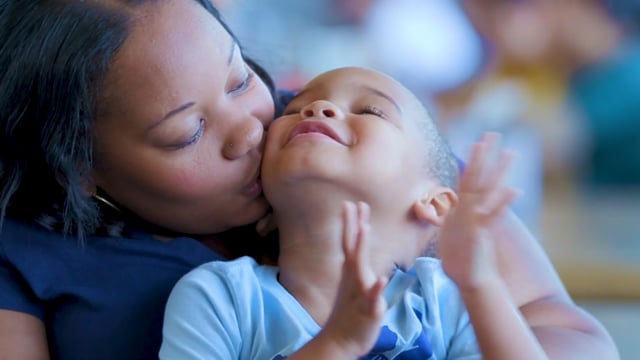Toddlers do the most adorable things: Give unexpected hugs, squeal with laughter, and cuddle up to you when they're tired.
But as any parent of a toddler will tell you, they also do some not-so-adorable things, like kick, scream ... or bite.
Biting is quite common in kids this age, but it can still be rather frustrating and difficult to manage at times. Here's how to help curb this type of behavior.
-

Managing Your Toddler’s Behavior
Learn how to encourage good behavior, handle tantrums, and keep your cool when parenting your toddler.
Why Do Toddlers Bite?
Biting is very common in early childhood. Babies and toddlers bite for a variety of reasons, such as teething or exploring a new toy or object with their mouth. As they begin to understand cause-and-effect, they also might bite a person to see if they can get a reaction.
Biting also can be a way for toddlers to get attention or express how they feel. Frustration, anger, and fear are strong emotions and toddlers lack the language skills to communicate how they are feeling. Instead, they may bite as a way of saying, "Pay attention to me!" or "I don't like that!" Toddlers may also learn that biting can be used as a tool for accessing a desired item.
Biting is slightly more common in boys and tends to happen most often between the first and second birthday. As language improves, biting tends to lessen.
What Can Help Kids Stop Biting?
Parents should have a zero-tolerance rule for biting — at home, daycare, and elsewhere. If it does happen, be sure to deal with it right away.
The next time your child bites, try these steps:
- Step 1: Be calm and firm. Address your child with a firm "no biting!" or "biting hurts!" Keep it simple and easy for a toddler to understand. Make it clear that biting is wrong, but avoid lengthy explanations until your child is old enough to understand. Remaining as calm as possible will help resolve the situation more quickly.
- Step 2: Comfort the victim. Direct your attention to the person who has been bitten, especially if it's another child. If there is an injury, clean the area with soap and water. Get medical care if the bite is deep or bleeding.
- Step 3: Comfort the biter, if need be. Often, toddlers don't realize that biting hurts. It's OK to comfort a child who feels upset about hurting someone. An older toddler might learn from being allowed to comfort or apologize to a friend after a bite. But if the biter is using the behavior to get attention, you don't want to reinforce this behavior by giving comfort and attention.
- Step 4: Offer alternatives. When things have calmed down, suggest alternatives to biting, like using the words "no," "stop," and "that's mine" when wanting to communicate with others. For example, show your child how to approach a peer, put out their hand, and then say “please” to ask for an item.
- Step 5: Redirect. Distraction works wonders with kids this age. If emotions and energy levels are running high or if boredom has set in, help redirect a little one's attention to a more positive activity, like dancing to music, coloring, or playing a game.
Discipline usually is not necessary, as most kids don't realize biting hurts. Never hit or bite a child who has bitten, as this teaches the child that this behavior is OK.
If you try these steps and the behavior doesn't stop, time-outs may help. Older toddlers can go to a designated time-out area — a kitchen chair or bottom stair — to calm down. As a general rule, about 1 minute per year of age is a good guide for time-outs. You might need to supervise your toddler during a time-out, but be careful to not give them any attention. Your child should be calm and quiet before leaving the time-out area.
To keep your little one on the right track:
- Be consistent. Reinforce the "No biting" rule at all times.
- Use positive reinforcement. Rather than reward negative actions with attention, make it a point to praise your child when they behave well. You can say something like, "I like how you used your words" or "I like how you're playing gently" to reinforce positive alternatives to biting.
- Plan ahead. Toddlers might be more comfortable and not feel the urge to bite if they know what to expect in new or high-energy situations. If biting happens at childcare, you might consider putting your child in a calmer, smaller setting.
- Find alternatives. As language skills develop, you can help your child find better ways to express difficult emotions. For example, asking kids to "use their words" when they're frustrated or upset can help calm them. If you need help, a doctor, counselor, or behavioral specialist can discuss ways to teach your child to manage strong emotions and express feelings in a healthy way.
When Should I Call the Doctor?
Biting is common in babies and toddlers, but it should stop when kids are about 3 or 4 years old. If it goes beyond this age, is excessive, seems to be getting worse rather than better, and happens with other upsetting behaviors, talk to your child's doctor. Together you can find its causes and ways to deal with it.


